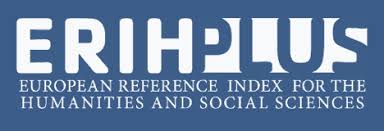№2, 2020
Protecting users from harmful information (aggression, terrorism, pornography, extremism, etc.) on the Internet has become more topical in recent years in terms of information abundance and has affected the socio-economic processes around the world. There are various scientific approaches and technologies to protect against malicious information, to identify their source, to determine exactly which web content is useful or harmful. The article provides information on the essence and application benefits of a widely used content-filtering method to distinguish between harmful and useful web content, and defines the levels of filtering of web content. The essence of static and dynamic approaches for blocking the websites that contain malicious content and the difference between them are highlighted. The purpose of the study is to demonstrate the importance of effective use of the content-filtering method and to highlight the importance of cleaning the web resources from malicious content in solving information security, cybercrime and other problems existing in the virtual space (pp.80-88).
- Гут Р. В., Кирпичников А. П., Ляшева С. А., Шлеймович М. П. Методы Ранговой Фильтрации В Системах Видеонаблюдения // Вестник технологического университета, 2017, т. 20, №17, c. 71–73
- Online Safety & Content filtering, https://www.iinet.net.au/about/legal/filtering
- Jinpeng W., Xiaolan Z, Glenn A.,Vasanth B., Peng N. Managing security of virtual machine images in a cloud environment // Proceedings of the 2009 ACM workshop on Cloud computing security, 2009, pp 91–96.
- Alguliyev R., Ojagverdieva S., Conceptual Model of National Intellectual System for Children Safety in Internet Environment // Computer Network and Information Security, 2019, v11, No.3, pp. 40–47.
- Фильтрация сетевого трафика , https://www.carbonsoft.ru
- Типы контент-фильтров, https://xserver.a-real.ru/support/useful/tipy-kontent-filtrov
- Чемодуров А. С., Карпутина А. Ю. Защита интернет-шлюза и фильтрация сетевого трафика корпоративной сети // «Концепт», 2015, № 1, с. 96–100.
- Смирнов И.В., Соченков И.В., Суворов Р.Е., Тихомиров И.А. Фильтрация контента в интернете: современный уровень и перспективы // Искусственный интеллект и принятие решений, 2013, №2, с.54–62
- Стрекалов И.Э., Новиков А.А., Лопатин Д.В. Методы динамической фильтрации веб-контента // Вестник ТГУ, 2014, т.19, вып. 2, с. 668–669
- Контентная фильтрация: зачем и как это делать, https://www.habr.com/ru/company/smart_soft/blog/273095
- French Safer Internet Centre. "No to harassment" – A French national plan of action against cyberbullying, https://www.betterinternetforkids.eu/web/portal/practice/awareness/detail?articleId=512910
- Internet Filtering in the United States and Canada in 2006-2007, https://www.opennet.net/studies/namerica2007
- Фильтрация и блокирование интернет-контента: мировой опыт, https://www.ria.ru/20120711/697151590.html
- Paul B. Countries Have the Strictest Internet Censorship?, https://www.readwrite.com/2019/07/01/which-countries-have-the-strictest-internet-censorship
- Фильтрация контента, https://www.sites.google.com/site/kyrsbez/48-1
- Фильтрация контента в Интернете. Анализ мировой практики, http://civilfund.ru/Filtraciya_Kontenta_V_Internete_Analiz_Mirovoy_Praktiki.pdf
- Alguliyev R.M., Aliguliyev R.M., Niftaliyeva G.Y. Filtration of Terrorism-Related Texts in the E-Government Environment //Cyber Warfare and Terrorism, 2018, issue 4, v 8., pp. 35–48.
- Alguliyev R.M., Aliguliyev R.M., Alakbarova I.Y. Extraction of hidden social networks from wiki-environment involved in information conflict // International Journal of Intelligent Systems and Applications (IJISA), 2016, vol 8, no.2, pp. 20–27
- Hammami M., Chahir Y., Chen L. WebGuard: web based adult content detection and filtering system. Proceedings of the IEEE / Proceedings of the WIC International Conference on Web Intelligence, 2003, pp.574–578
- Suvorov R., Sochenkov I., Tikhomirov I. Training Datasets Collection and Evaluation of Feature Selection Methods for Web Content Filtering // Artificial Intelligence: Methodology, Systems, And Applications, 2014, vol. 8722, pp.129–138
- Colmenares-Guillen LE., Velasco FJA. Filter for Web Pornographic Contents Based on Digital Image Processing //Combinatorial optimization problems and informatics, 2016, vol.7, №2, pp. 13–21
- Guermazi R., Hammami M., Hamadou AB. WebAngels filter: A violent Web filtering engine using textual and structural content-based analysis /Computer Science, 2008, vol 5077, pp.268–282
- Liu S., Forss T. Text Classification Models for Web Content Filtering and Online Safety / Proceedings of the 2015 IEEE International Conference on Data Mining Workshop, 2015, pp. 961–968
- Ларионова А.В., Хорев П.Б. Метод фильтрации спама на основе искусственной нейронной сети // Науковедение, 2016, tом 8, №3, c. 1–7.
- Open Sourcing a Deep Learning Solution for Detecting NSFW Images, https://www.yahooeng.tumblr.com/post/151148689421/open-sourcing-a-deep-learning-solution-for
- Nian F., Li T., Wang Y., Xu M., Wu J., Pornographic Image Detection Utilizing Deep Convolutional Neural Networks // Neurocomputing, 2016, v 2010, pp. 283–293.





.jpg)









